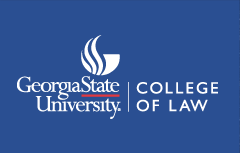Document Type
Article
Abstract
In 2012, the Supreme Court addressed private party qualified immunity in the case of Filarsky v. Delia. There, the Court found that both the historical and policy bases for immunity under § 1983 supported extending qualified immunity to outside counsel retained by a municipality. The Court noted that full-time government employees can always seek qualified immunity, so not extending it to individuals employed on some other basis would create “significant line-drawing problems . . . [which could] deprive state actors of the ability to ‘reasonably anticipate when their conduct may give rise to liability . . . .’”
This Comment synthesizes the post-Filarsky framework for determining the availability of qualified immunity for private individuals. Part I reviews the text and background of § 1983, surveys the evolution of § 1983 immunities, and explores the historical and legal underpinnings of private party immunity. Part II addresses the issues raised or left unanswered by Filarsky, and what questions lower courts are facing in Filarsky’s wake. Part III resolves these questions by showing that Filarsky converts the historical and policy inquiries into a functional test that focuses on the nature of the challenged activity and asks whether the defendant’s actions furthered government ends.
Part III, in other words, shows that while Filarsky preserved the form of the two-part test for immunity first articulated in Wyatt and clarified in Richardson, Filarsky adjusted these inquiries such that in substance they embody the functional approach advocated by the dissent in Richardson.
Recommended Citation
Andrew W. Weis,
Qualified Immunity For “Private” § 1983 Defendants After Filarsky V. Delia,
30
Ga. St. U. L. Rev.
(2014).
Available at:
https://readingroom.law.gsu.edu/gsulr/vol30/iss4/6
Included in
Civil Law Commons, Civil Rights and Discrimination Commons, Constitutional Law Commons, Labor and Employment Law Commons, Law and Society Commons, Legal Remedies Commons, Litigation Commons, Torts Commons
